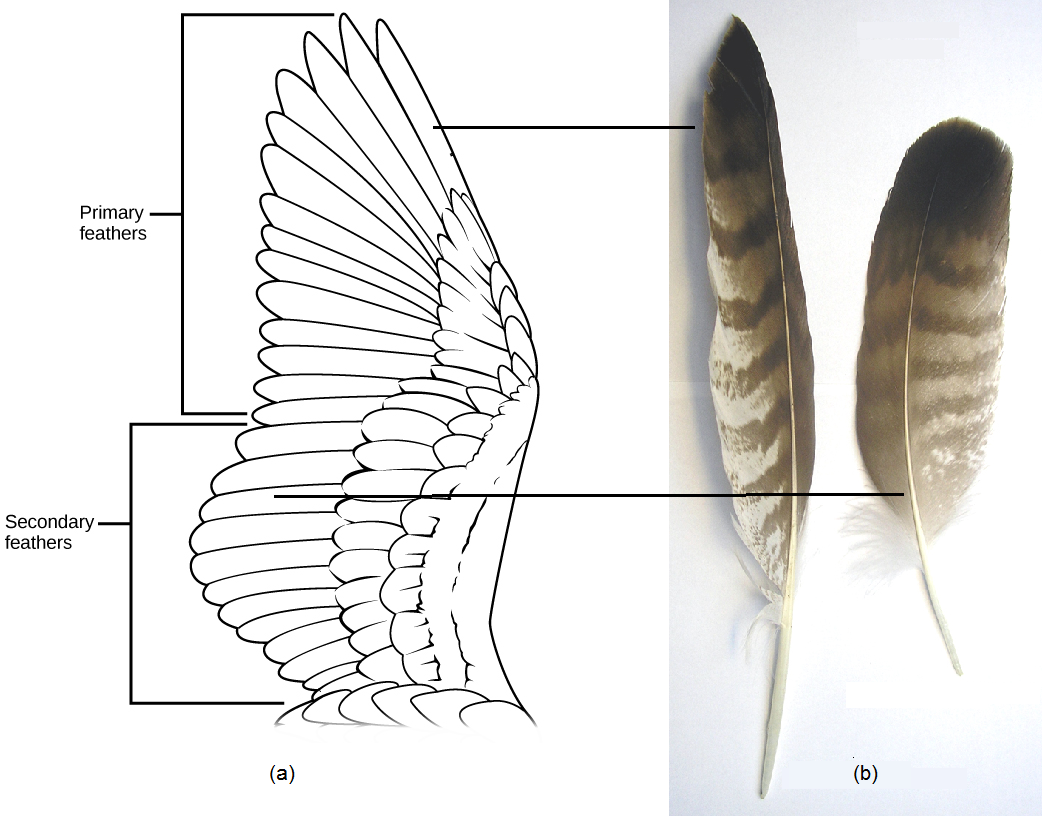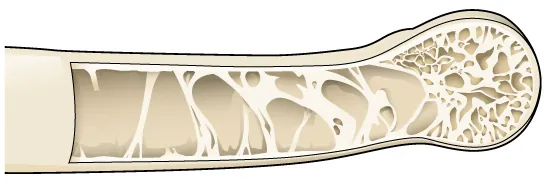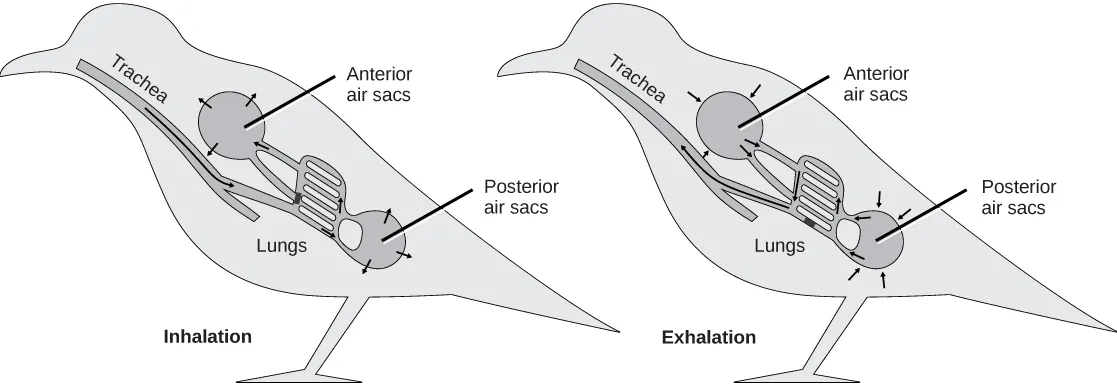29.5 Birds
Learning Objectives
- Describe the derived characteristics in birds that facilitate flight
With over 10,000 identified species, the birds are the most speciose of the land vertebrate classes. Abundant research has shown that birds are really an extant clade that evolved from maniraptoran theropod dinosaurs about 150 million years ago. Thus, even though the most obvious characteristic that seems to set birds apart from other extant vertebrates is the presence of feathers, we now know that feathers probably appeared in the common ancestor of both ornithischian and saurischian lineages of dinosaurs. Feathers in these clades are also homologous to reptilian scales and mammalian hair, according to the most recent research. While the wings of vertebrates like bats function without feathers, birds rely on feathers, and wings, along with other modifications of body structure and physiology, for flight, as we shall see.
Characteristics of Birds
Birds are endothermic, and more specifically, homeothermic—meaning that they usually maintain an elevated and constant body temperature, which is significantly above the average body temperature of most mammals. This is, in part, due to the fact that active flight—especially the hovering skills of birds such as hummingbirds—requires enormous amounts of energy, which in turn necessitates a high metabolic rate. Like mammals (which are also endothermic and homeothermic and covered with an insulating pelage), birds have several different types of feathers that together keep “heat” (infrared energy) within the core of the body, away from the surface where it can be lost by radiation and convection to the environment.
Feathers not only provide insulation, but also allow for flight, producing the lift and thrust necessary for flying birds to become and stay airborne.

An important requirement for flight is a low body weight. As body weight increases, the muscle output required for flying increases. The largest living bird is the ostrich, and while it is much smaller than the largest mammals, it is secondarily flightless. For birds that do fly, reduction in body weight makes flight easier. Several modifications are found in birds to reduce body weight, including pneumatization of bones. Pneumatic bones (Figure 29.33) are bones that are hollow, rather than filled with tissue. Pneumatic bones are not found in all birds, and they are more extensive in large birds than in small birds.

Other modifications that reduce weight include the lack of a urinary bladder. Birds possess a cloaca, an external body cavity into which the intestinal, urinary, and genital orifices empty in reptiles, birds, and the monotreme mammals. The cloaca allows water to be reabsorbed from waste back into the bloodstream. Thus, uric acid is not eliminated as a liquid but is concentrated into urate salts, which are expelled along with fecal matter. In this way, water is not held in a urinary bladder, which would increase body weight. In addition, the females of most bird species only possess one functional (left) ovary rather than two, further reducing body mass.
The respiratory system of birds is dramatically different from that of reptiles and mammals, and is well adapted for the high metabolic rate required for flight. Gas exchange occurs in “air capillaries” or microscopic air passages within the lungs. The arrangement of air capillaries in the lungs creates a counter-current exchange system with the pulmonary blood. In a counter-current system, the air flows in one direction and the blood flows in the opposite direction, producing a favorable diffusion gradient and creating an efficient means of gas exchange. This very effective oxygen-delivery system of birds supports their higher metabolic activity.

All these unique and highly derived characteristics make birds one of the most conspicuous and successful groups of vertebrate animals, filling a range of ecological niches, and ranging in size from the tiny bee hummingbird of Cuba (about 2 grams) to the ostrich (about 140,000 grams). Their large brains, keen senses, and the abilities of many species to imitate vocalization and use tools make them some of the most intelligent vertebrates on Earth.
Link to Learning
Watch this video showing the problem solving skills of ravens, considered one of the most intelligent birds (and animals overall).

